Sportscoats and odd jackets are quite popular today but their origins lay in the riding jackets of the 19th century and Norfolk jacket, which is one of the most characteristic sportscoats ever invented. However, it remains unclear what exactly is and what isn’t a true Norfolk jacket. Hence, I would like to elaborate on the history of this garment, its numerous style variations and outline retail sources of this ‘father’ of tweed sportscoats as we know them today.
The Origins & History of the Norfolk Jacket
Like so many other garments it remains uncertain who exactly invented this very garment or what it looked like in the original form. Basically, there are two major theories:


The 15th Duke of Norfolk
The most widespread theory claims the Norfolk jacket was originally a hunting coat that was invented in the 1860’s by Henry Fitzalan-Howard, the 15th Duke of Norfolk. He was born in 1847 and his father died in 1860, and so it is not impossible that he invented that style as a young man in the late 1860’s. In any case, according to this theory it was popularized by the Prince of Wales in the 1880’s, who later became King Edward VII (he also popularized the Homburg hat). Overall, this theory does not sounds implausible, but at the same time, there is no evidence or images showing him in such a garment.
The Earl of Leicester also known as the Coke of Norfolk
According to another theory, Earl of Leiscester aka Coke of Norfolk and his 43,000 acre estate in Norfolk, England were the origin of the Norfolk jacket. He entertained England’s noble gentlemen in the 1820’s, including the Prince of Wales, who would later become George IV, at his country residence where they went on hunting partridge and other game birds. The Earl and his friends supposedly adopted the belted jacket with box pleats and roomy patch pockets, so they could conveniently carry all kinds of hunting accouterments. They opted for a belt – it improved the silhouette due to the snug fit and kept the cold air out.
As with the first theory, there is no real evidence that supports the claim. As a historical fact, the jacket was worn by the Rifle Corps in the Volunteer Movement of 1859-1860. In addition, it appeared in fashion illustrations for the dress of young boys starting in 1859. Originally, the Norfolk was a shirt known as the “Norfolk Shirt”, which was later modified into a coat but strictly reserved for country wear. Based on that, it seems like the first theory is at least inaccurate in regard to the time frame. In either case, its roots are in Norfolk, England and since it was such a versatile garment it soon became a wardrobe staple in for well dressed gentlemen. In the 1860s, it was modified into a shooting jacket and with the increase in spare time and sporting activities among the general public during the following two decades, it became a jacket ‘being especially suited for bicycling, business, fishing, pleasuring, and the moorland’ (Tailor and Cutter, April 1888). In the following years, dress codes became more relaxed and not only was the lounge suit gaining in popularity, but by the 1890s young chaps were seen wearing Norfolk jackets in town.
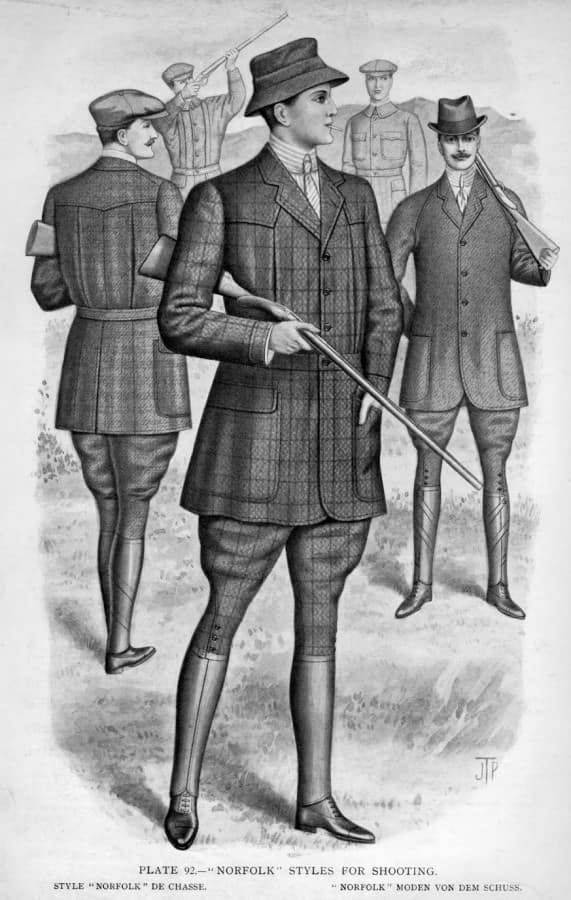

What exactly is a Norfolk Jacket? And can I wear one?
As you can see, it is not even clear how this jacket looked like in the beginning and over time there have been numerous modifications. In the 1930’s, many considered the Norfolk to be cut slightly roomier than a sportscoat with an all-around belt, two long box pleats in the front and one down the middle in the back. In the process, there were lots of variations, with or without pleats, half belts, shoulder pleats etc. but to simplify things, I want to cut it down to three categories: 1. Full Norfolk Jacket 2. Half Norfolk Jacket 3. Norfolk Suit
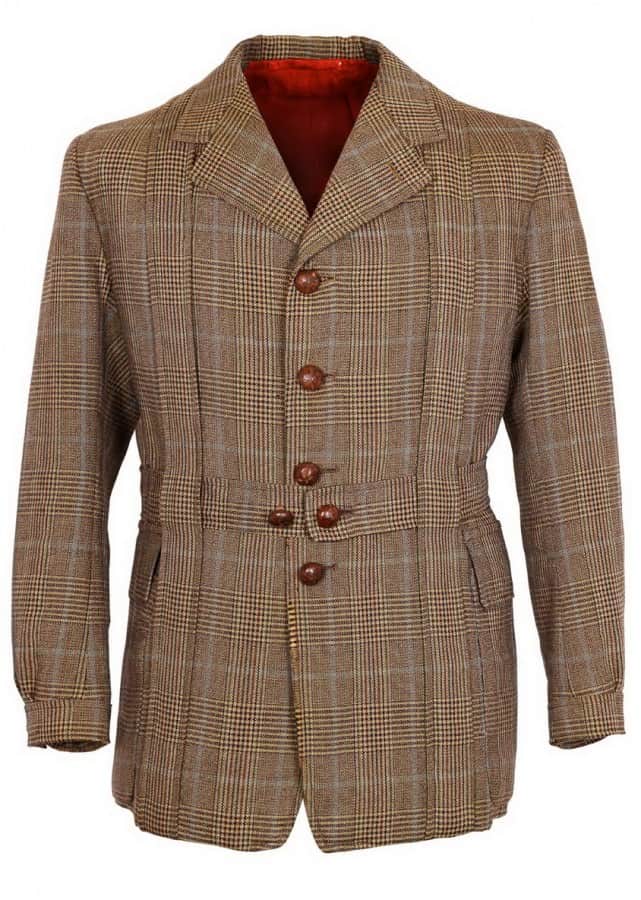
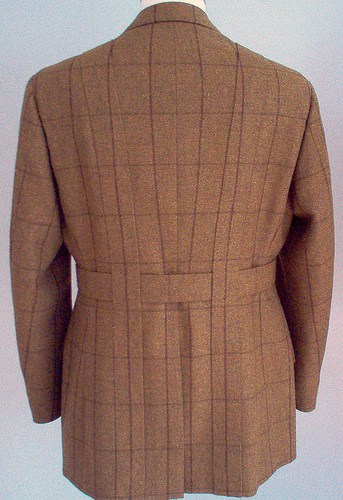
Full Norfolk Jacket
Probably the most classic version of the Norfolk jacket is single breasted with three or four front buttons, pleats and a full belt. The box pleats on these jackets are either cut separately and laid on the coat, or they are double ended and inverted. The latter version allows for a greater range of movement, when lifting up arms to shoot a rifle or when swinging a golf club. Hence, they were often more popular, but both versions are classic. The belt of the classic version features a button closure goes all around the waist, without being attached to the pleats. Sometimes, the shoulders are enforced with a second layer of cloth or a leather patch. The lapels are always notched, the vent is centered and the buttons are leather, wood or deer horn since it is country attire.
The pockets are expandable to keep cartridges or other belongings and feature a flap to keep things from falling out. The jacket is generally made out of tweed or heavy shetland wool and had square or only a very slightly rounded front. Sometimes the sleeve cuffs would have a button mechanism to make them tighter (similar to ribbed cuffs), just like in this picture of Prince Philip in 1952. This coat was made by Todhouse and Reynard (Norwich) Ltd. which were known as “Norfolk House” in England. Despite several Royal Warrants, they could not manage to remain independent and were incorporated into Norton & Sons in the 1960’s. Prince Philip is wearing the Norfolk jacket with knickerbockers, which is the classic way. Some people prefer plus fours over plus twos and others opt for slacks.
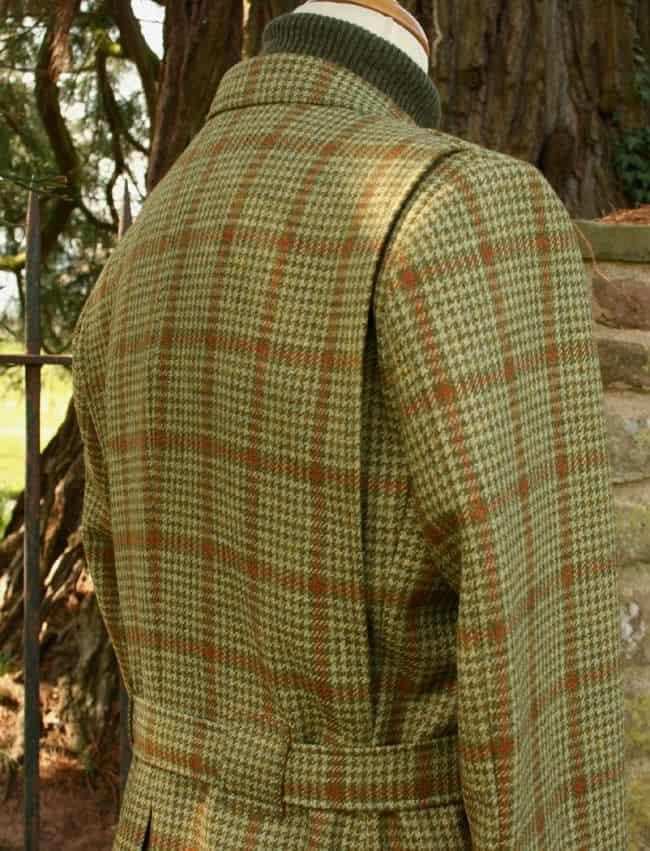

Sometimes, it is designed with a storm collar that allows you to button your collar to protect your neck better from the elements. Overall, a full Norfolk ensemble is rarely seen anymore and if so, mostly by vintage lovers, reenactors of clothes-conscious hunters. Every once in a while you will see it in the city worn by eccentric dandies but you will certainly stand out with it. Unless you want the attention, a Norfolk is only appropriate in the country.
The first Norfolk jackets were often made of Harris tweed and homespuns, and even women wore close-fitting adaptations of the Norfolk for sports and country wear but also as fashionable dress.
Half Norfolk Jacket
Generally the addition of half implies something is just a part of the same, but in case of the Norfolk jacket half means a different jacket with fewer pleats and a half belt. Just like its cousin, it features notched lapels and patch pockets, which are sometimes flapped. From the front, it looks like a regular sportscoat but in the back it features a center vent, a half belt and most importantly the action pleats. Pleats really increase movement considerably and are hence ideally suited for all activities that require you to move your arms, such as biking, golfing, shooting etc. Generally it is made out of Harris tweed, saxony tweed, thornproof or even worsted wool fabrics.

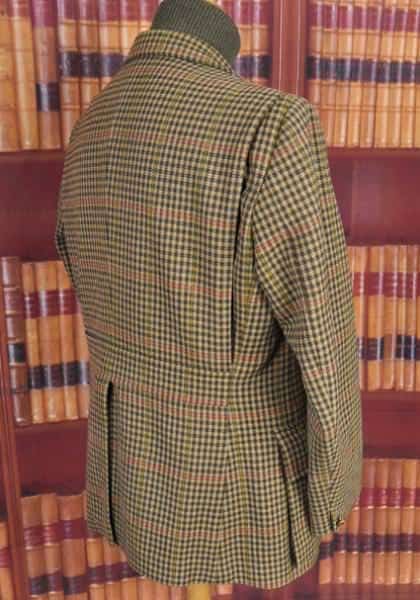
Personally I prefer a half over the full norfolk jacket because it is only slightly different than a sportscoat and more subdued in its appearance. Moreover, it allows the combinations with a vest in doeskin or moleskin fabric and hence allows a variation of outfits, whereas the full norfolk coat would not show anything of a vest. After all, it can be worn as sportscoat substitute and has a much broader spectrum of use than the classic Norfolk jacket. It works great with bold windowpane trousers, corduroys, moleskins or even cavalry twill and flannel trousers will work as well. Altogether, you can combine it with almost anything.

Norfolk Suit
In the 1930’s and 1940’s the Norfolk suit was also relatively popular compared to today. This meant it was worn with matching, regular trousers. Basil Rathbone shows us the possibilities starring as Sherlock Holmes in a brown and black & white tweed. Today, a Norfolk suit would certainly look a bit dated and maybe inappropriate, on the other hand it is certainly very unique and difficult to find.


Where to Buy Norfolk Suits
Fortunately, there are a number of places where you can buy a classic of half Norfolk jacket today. As you can see in this article, there are no limitations in regard to color. Basically every tweed fabric will make for a great Norfolk jacket.

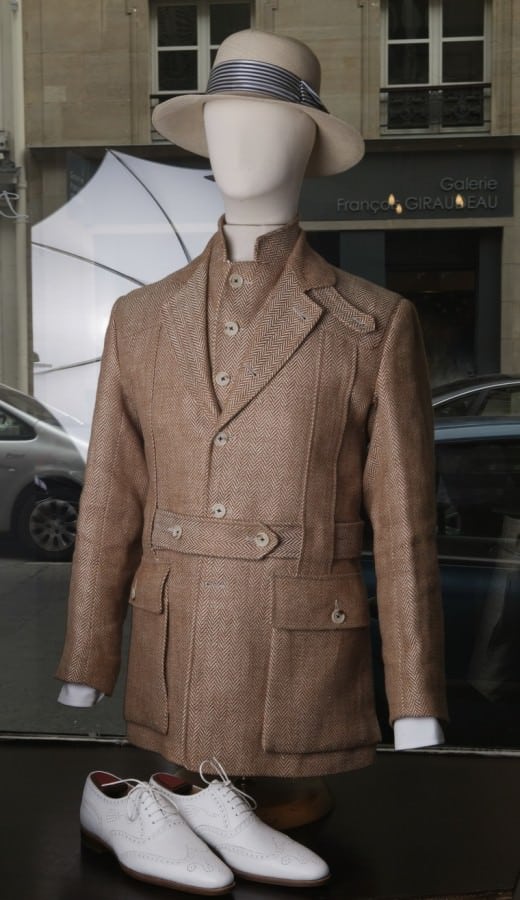
Bespoke
Everybody in England from Savile Row Tailor Gieves & Hawkes over Dege & Skinner to a small tailor shop should be able to tailor you a proper full or half Norfolk jacket with matching trousers. Prices depending on the tailor will probably range between $1000 and $4000 for a jacket.
Off the Rack & Made-To-Order
Places like Marc Guyot or Beavor of Bulton offer full Norfolk jackets off the rack. Probably one of the most popular provider of English country garments in recent years was Bookster but they are now bankrupt. Instead, order directly from their supplier, which offers a half Norfolk and full Norfolk jacket. For more modern interpretations of this classic style, you may want to look at places like this. If you are in London, you can find them at David Saxby – Old Hat Prices are between $550 and $1100.
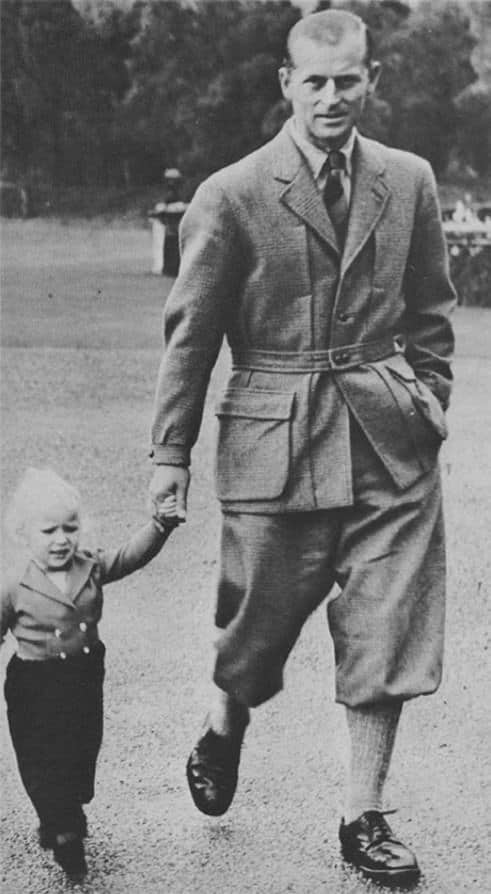


Vintage
Probably the largest and most interesting selection of Norfolk jackets is available from vintage vendors in England and online at places like ebay. Of course, this is the most tedious process and you have to buy what is available but you may find a bargain for $100 – 200. On the other hand, places like Bookster offer a range of customization and fabric options, starting at around $700. At the end of the day, everybody has to decide on their own what they need and want, but fortunately, there are many options out there for you and if the full Norfolk is too much for you, a half Norfolk is an excellent alternative to yet another tweed sportscoat.
Want to learn more about jackets, coats, and overcoats?
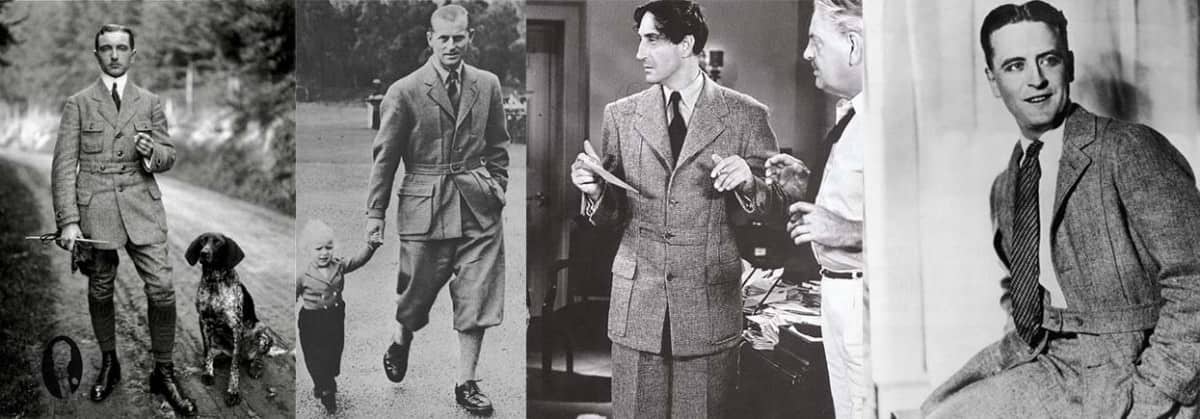
Good day Mr. Schneider,
first of all please allow me to express to a tremendous sincere thanks for your labors on a well documented and illustrated book “Gentlemen of Style” I’m really enjoying reading it.
And certainly a fantastic article here on the Norfolk jacket, being that I live in the rural area of the state in which I reside and have recently acquired a English Spaniel how appropriate such a jacket will be when we go for walks through the woods!
Best Regards,
Park Jacobs Weatherby
Park, it would be a great jacket for you to have it seems. I look forward to seeing pictures of it!
I like the half-Norfolk look but can’t imagine wearing a full one, personally.
I have a Norfolk variant, which I’ve worn for many years. It has the large patch pockets and distinctive double pleats that many Norfolk jackets have but lacks any belt at all. Is it a quarter Norfolk or just a sports coat with Norfolk influences?
Hello Sven,
I really enjoyed reading your article.
Norfolk is a very stylish and versatile sportcoat, particularly suited for outdoor and country activities, such as cycling.
We always see a lot of them in the different Tweed Runs all over the world..
For Londoners, “David Saxby” shop in Fulham offers off-the-peg or MTM Norfolk Jackets at £495, made in England from the best scottish tweeds.
Just next door, the famous “Old Hat” shop also displays vintage Norfolk and Half-Norfolk jackets.
Best,
TJ
Hi Raphael,
Lovely article as always. Many years ago I had a full Norfolk Jacket made by Kevin & Howlin in Dublin. The shop still exists, but whether they still make Norfolk jackets I couldn’t say. I liked it very much but as you point out it is really only appropriate for the country.
Best regards,
Malcolm
Dear Malcom, that is interesting to learn. Do you still own it? If so, pictures are always welcome as you know.
Unfortunately no, I grew a little larger in middle age and gave it away to a charity shop.
My favorite one is the one that Prince Philip had on. Can you really find something like that on ebay?
Thanks for introducing these beautiful jackets. I just received my own Norfolk Jacket made by Bookster.